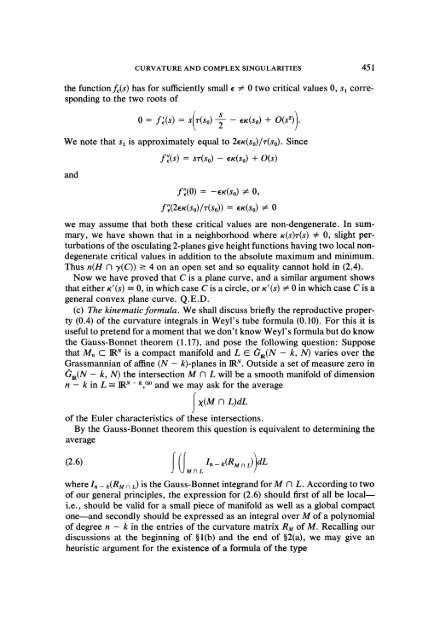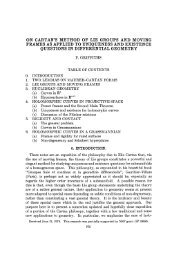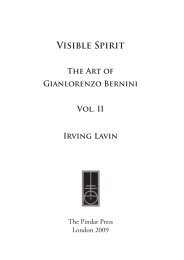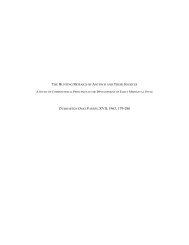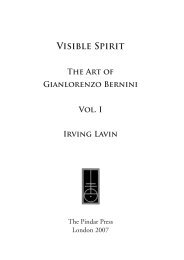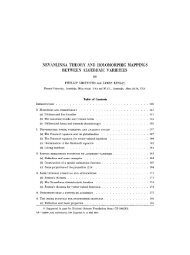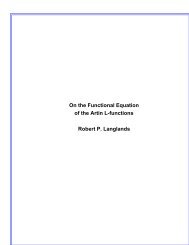View PDF - Project Euclid
View PDF - Project Euclid
View PDF - Project Euclid
Create successful ePaper yourself
Turn your PDF publications into a flip-book with our unique Google optimized e-Paper software.
CURVATURE AND COMPLEX SINGULARITIES 451<br />
the function f,(s) has for sufficiently small e 0 two critical values 0, S corresponding<br />
to the two roots of<br />
(<br />
s<br />
0 f(s) s Z(So)-- er(So) + O(s).<br />
We note that s is approximately equal to 2e(so)/r(so). Since<br />
and<br />
f(s) sT"(So)- ere(So) + O(s)<br />
f’(o) -,(So) o,<br />
f’(2e,(So)/r(So)) e,(So) 0<br />
we may assume that both these critical values are non-dengenerate. In summary,<br />
we have shown that in a neighborhood where (s)r(s) 4: O, slight perturbations<br />
of the osculating 2-planes give height functions having two local nondegenerate<br />
critical values in addition to the absolute maximum and minimum.<br />
Thus n(H 71 y(C)) -> 4 on an open set and so equality cannot hold in (2.4).<br />
Now we have proved that C is a plane curve, and a similar argument shows<br />
that either r’ (s) -= 0, in which case C is a circle, or r’ (s) 0 in which case C is a<br />
general convex plane curve. Q.E.D.<br />
(c) The kinematic formula. We shall discuss briefly the reproductive property<br />
(0.4) of the curvature integrals in Weyl’s tube formula (0.10). For this it is<br />
useful to pretend for a moment that we don’t know Weyl’s formula but do know<br />
the Gauss-Bonnet theorem (1.17), and pose the following question: Suppose<br />
that Mn C IR N is a compact manifold and L t(N k, N) varies over the<br />
Grassmannian of affine (N k)-planes in IRN. Outside a set of measure zero in<br />
(m(N k, N) the intersection M fq L will be a smooth manifold of dimension<br />
n k in L IR ,ta) and we may ask for the average<br />
x(M L)dL<br />
of the Euler characteristics of these intersections.<br />
By the Gauss-Bonnet theorem this question is equivalent to determining the<br />
average<br />
(2.6) I (f , I’ (Rt )) dL<br />
where I, (Rt r ) is the Gauss-Bonnet integrand for M L. According to two<br />
of our general principles, the expression for (2.6) should first of all be local--i.e.,<br />
should be valid for a small piece of manifold as well as a global compact<br />
one--and secondly should be expressed as an integral over M of a polynomial<br />
of degree n k in the entries of the curvature matrix Rt of M. Recalling our<br />
discussions at the beginning of l(b) and the end of 2(a), we may give an<br />
heuristic argument for the existence of a formula of the type


